Parrots are intelligent, social, and beautiful birds that can make great companions for humans. However, some parrots may develop aggressive behaviors that make them difficult to handle and enjoy.
Various factors, such as fear, stress, hormonal changes, territoriality, jealousy, or past trauma, can cause aggression in parrots. Fortunately, there are ways to tame an aggressive parrot and help it become more friendly and trusting.
We will also provide tips on preventing aggression in parrots and dealing with common problems such as biting and screaming.
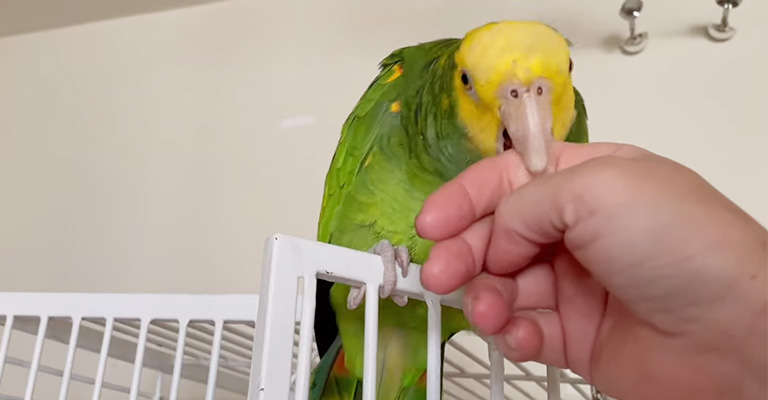
How to Tame an Aggressive Parrot?
Here are some points on how you can tame an aggressive parrot-
Establish Trust and Bonding
Spend time near your parrot’s cage, talking softly and calmly to build familiarity. You can offer treats and rewards through the cage bars to associate your presence with positive experiences. Also you can avoid sudden movements or loud noises that may startle or provoke aggression.
Gradual Introduction and Socialization
Begin by allowing the parrot to observe you safely outside the cage. Then, slowly move closer over time, maintaining a calm and non-threatening demeanor. Talk softly and offer treats to create positive associations with your presence.
Respect Personal Space
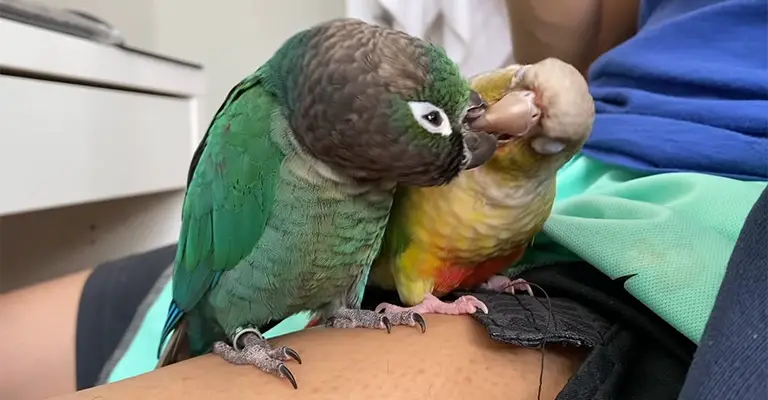
Give the parrot ample space when it displays signs of discomfort or aggression, such as hissing, biting, or fluffing up. Avoid forcing interactions or invading the parrot’s personal space, as it may escalate aggression. Allow the parrot to approach you on its terms when it feels comfortable.
Positive Reinforcement Training
You can use positive reinforcement techniques to reward desirable behaviors and discourage aggression. Also you can offer treats, verbal praise, and gentle petting when the parrot exhibits calm and friendly behavior.
Remember to avoid punishment or negative reinforcement, which can intensify aggression and erode trust.
Gradual Handling and Step-up Training
Once the parrot is comfortable with your presence, introduce step-up training. Remember to use a perch or a gloved hand to encourage the parrot to step onto it, rewarding it with treats and praise. Gradually increase the duration of handling sessions, ensuring the parrot feels secure and supported.
Enrichment and Mental Stimulation
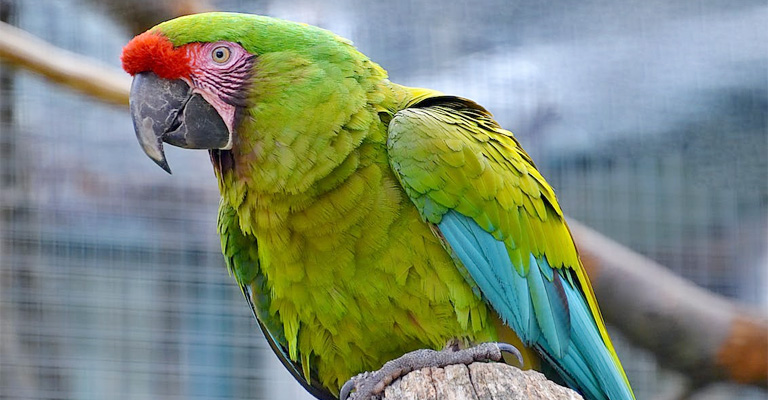
Provide a stimulating environment with toys, puzzles, and interactive activities to keep the parrot engaged and mentally stimulated.
Also, you can offer a variety of toys, perches, and objects for the parrot to explore and interact with. And regularly rotate toys to maintain novelty and prevent boredom.
Consistency and Patience
Taming an aggressive parrot requires time, consistency, and patience. Also, maintain a routine and interact with the parrot daily, reinforcing positive behaviors.
You need to understand that progress may be slow and setbacks may occur, but consistent effort and positive reinforcement will lead to positive changes over time.
Remember, each parrot is unique, and the time required for taming an aggressive parrot may vary. If you encounter challenges or are unsure about specific behaviors, consult an avian veterinarian or an experienced bird behaviorist for additional guidance and support.
Potential reasons behind aggression in pet birds. Write points with a broad explanation.
Potential Reasons Behind Aggression In Parrot
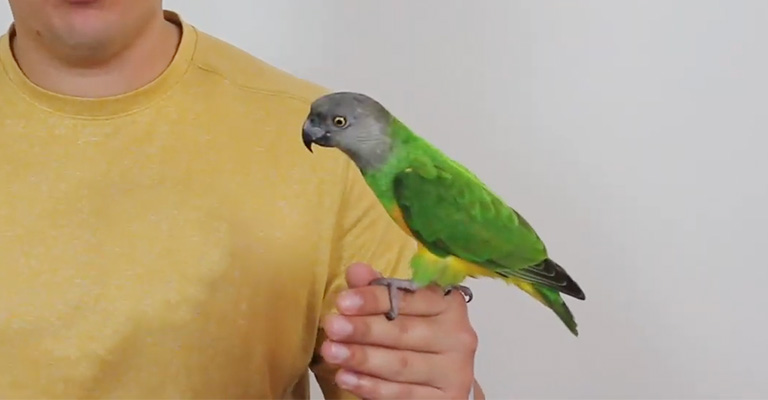
Here are some potential reasons behind aggression in parrots-
Fear or Threat
Birds may exhibit aggression as a defense mechanism when they feel threatened or fearful. Also, previous traumatic experiences, unfamiliar surroundings, or perceived threats from humans or other pets can trigger aggression.
Lack of Socialization
Birds not adequately socialized may display aggressive behaviors towards humans or other birds. Insufficient exposure to different people, environments, and stimuli during their early development stages can contribute to aggression.
Hormonal Changes
Hormonal fluctuations, especially during the breeding season, can cause changes in a bird’s behavior, leading to increased aggression. And male birds may become more territorial and protective, while females may exhibit aggression to defend their nesting area.
Frustration or Boredom
Birds that are bored or lack mental and physical stimulation may redirect their frustration through aggressive behaviors. Sometimes limited access to toys, perches, or activities can increase pent-up energy and result in aggressive tendencies.
Lack of Training or Discipline
Birds that have not received proper training or discipline may develop aggressive behaviors. Inconsistent incorrect training methods can also lead to clarity and increased bird aggression.
Health Issues
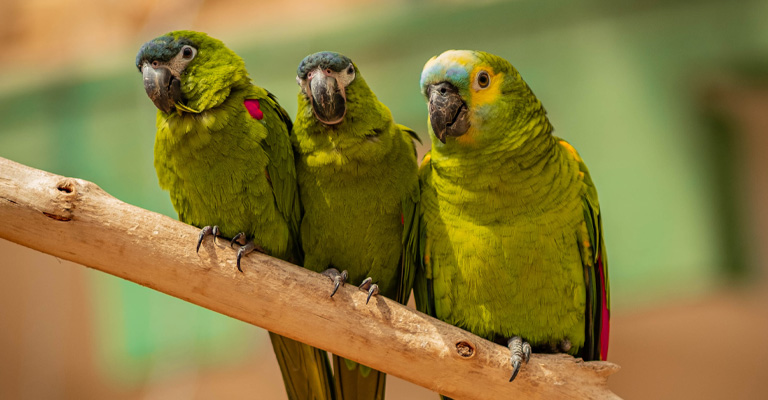
Underlying health problems or pain can cause birds to act aggressively to respond to discomfort or stress. Also injuries, infections, or hormonal imbalances can contribute to changes in behavior and increased aggression.
Territoriality
Birds, especially certain species, can exhibit aggressive behaviors when they perceive their cage or living space as their territory. And They may display aggression towards anyone who intrudes or approaches their designated area.
Lack of Boundaries
Birds that have not been taught appropriate boundaries or have not learned to respect personal space may exhibit aggressive behaviors. Improper handling, rough interactions, or lack of consistent rules can contribute to the development of aggression.
It is important to note that the underlying cause of aggression can vary from bird to bird. If you are experiencing aggression issues with your pet bird, it is recommended to consult an avian veterinarian or seek guidance from a professional bird behaviorist.
They can assess the situation, identify the root cause, and provide appropriate strategies for managing and addressing the aggression.
Signs of Aggression in Parrots
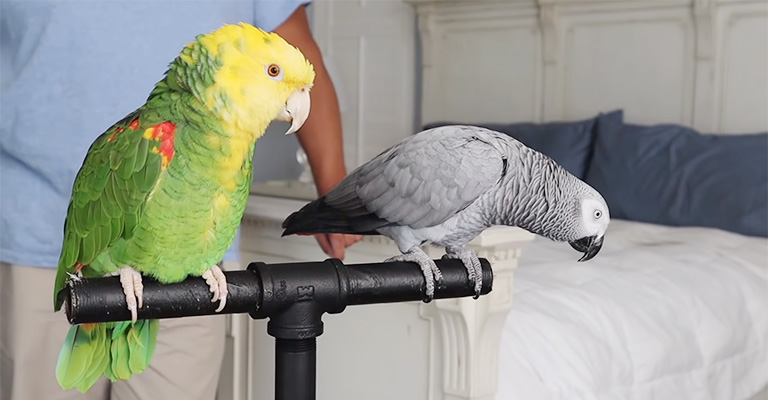
Signs of Aggression in Parrots are-
Biting:
Parrots may use their beak to bite aggressively, causing pain and injury. Also, aggressive bites are often quick, forceful, and accompanied by aggressive body language.
Lunging or Charging:
Parrots may exhibit aggressive behavior by lunging or charging toward a perceived threat or target. Flapping wings can accompany this, raised feathers, and vocalizations.
Fluffed Feathers:
When a parrot feels threatened or displays aggression, it may fluff its feathers to appear larger and more intimidating. Fluffed feathers can indicate heightened aggression and defensive posturing.
Growling or Hissing:
Parrots may emit low growls or hissing sounds when they feel threatened or want to assert dominance. Aggressive body language often accompanies these vocalizations and may escalate into more aggressive behaviors.
Wing Spreading or Open Beak Displays:
Parrots may open their wings partially or entirely to display aggression or appear larger and more intimidating. They may also open their beak wide, showing off their sharp beak as a warning sign.
Tail Fanning or Tail Flipping:
A parrot may fan its tail feathers or rapidly flip its tail as a visual display of aggression or agitation. This behavior is often accompanied by other aggressive body language and vocalizations.
Squawking or Screeching:
Parrots may vocalize loudly, squawk, or screech when feeling threatened or aggressive. The vocalizations are often intense and persistent, intended to intimidate or warn potential threats.
Body Posture:
Aggressive parrots may display specific body postures such as leaning forward, puffing up their chest, or lowering their head. They may also hold their body rigid and tensely, ready to attack or defend.
Eye Pinning or Staring:
Parrots may exhibit aggressive behavior by pinning their eyes or staring intensely at a target or perceived threat. This direct eye contact can be an indicator of aggression and can precede other aggressive behaviors.
Guarding or Territoriality:
Aggressive parrots may exhibit possessive behavior over their cage, food, toys, or specific areas. They may become defensive and aggressive when anyone approaches or tries to access these possessions.
It is important to remember that aggression in parrots can have various underlying causes, and it is crucial to address the root cause and seek professional advice from an avian veterinarian or bird behaviorist.
They can guide how to manage and modify aggressive behavior and create a safe and positive environment for the parrot and its human companions.
Frequently Asked Questions
This question has no definitive answer, as it depends on factors such as the parrot’s personality, history, species, age, and environment. Some parrots may take weeks or months, while others may take years or never fully tame. The key is to be patient, consistent with your training, and not give up on your parrot.
It is possible to tame an aggressive parrot that is old or wild-caught, but it may be more challenging than taming a young or hand-raised parrot. Old or wild-caught parrots may have more ingrained habits and fears that are harder to change. They may also have less social skills and trust in humans. However, with enough time, effort, and love, you can still form a bond with them and help them overcome their aggression.
Parrots have various ways of expressing their emotions through their body language and vocalizations. Some signs of a happy parrot include dropping its head for petting, fluffing its feathers, vocalizing or singing, mounting its handler, or regurgitating food on them. Some signs of an unhappy parrot include biting, screaming, plucking their feathers, hiding in the corner of the cage, or being lethargic.
Music or sounds can have a calming or stimulating effect on parrots, depending on the type and volume of the sound. You can play soothing or cheerful music or sounds for your parrot during your training sessions, such as classical music, nature sounds, or other parrot noises. However, you should avoid playing loud or harsh music or sounds that may scare or annoy your parrot, such as rock music, sirens, or fireworks.
Food or treats can be a powerful motivator and reward for parrots, especially if they are tasty and healthy. You can use food or treats to lure your parrot to your hand, reinforce positive behaviors, or distract your parrot from negative behaviors. However, you should avoid overfeeding your parrot or giving it unhealthy or toxic food or treats, such as chocolate, avocado, or alcohol.
Conclusion
Taming an aggressive parrot can be a rewarding and fulfilling experience for you and your feathered friend. Pressure or positive reinforcement methods can help your parrot become more friendly and trusting.
Following some general tips can also prevent or reduce aggression in your parrot. By dealing with some common problems, you can also handle any challenges that may arise along the way.
Remember that every parrot is different and has its personality and needs. Therefore, you should always respect your parrot’s individuality and preferences and adjust your training accordingly. You can build a lasting and loving relationship with your parrot with patience and consistency.